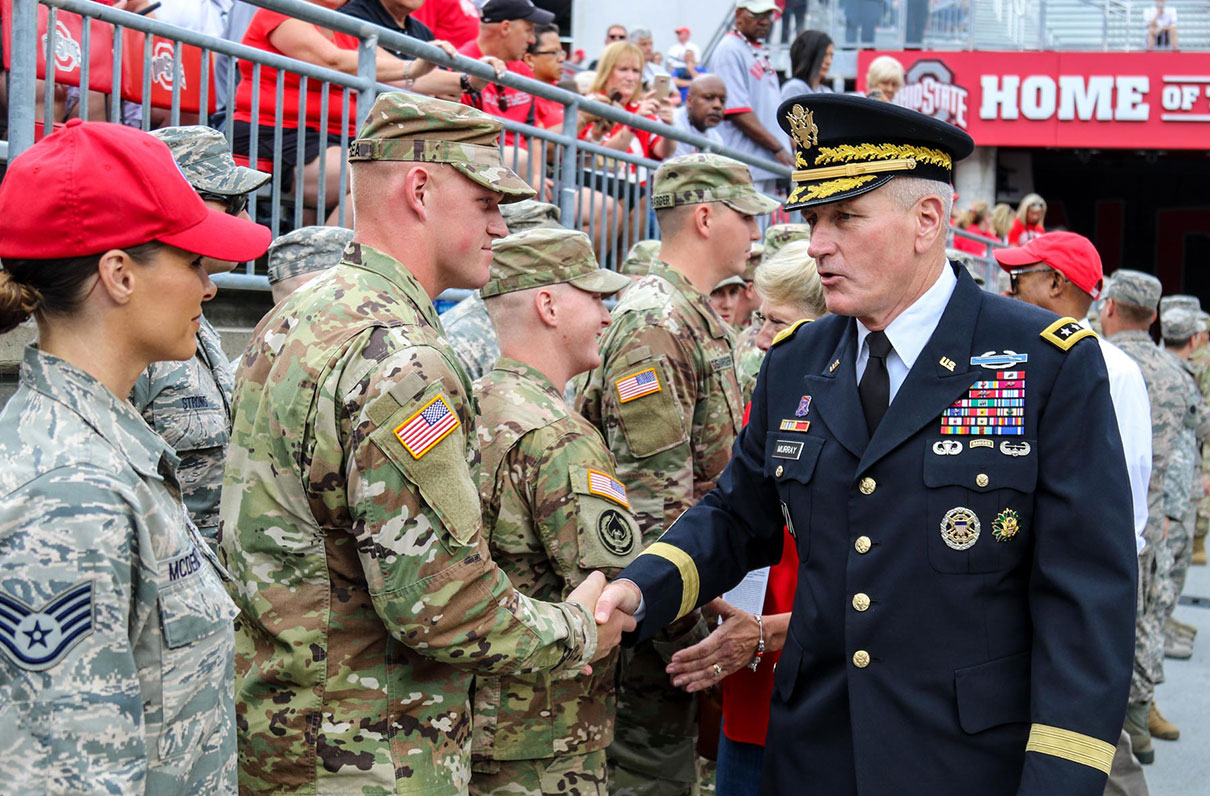The Army's new command to enhance soldier lethality and develop new battlefield technology will be led by Gen. John Murray.
President Donald Trump nominated Murray, a member of the Military Officers Association of America, in July, shortly after the Defense Department announced Army Futures Command would be located in Austin, Texas. Murray earned his fourth star in a ceremony Aug. 24, just before the command's activation.
Murray, commissioned as an infantry officer from The Ohio State University in 1982, has served in leadership positions and commanded at the highest levels of the Army over his 36-year career. He is the first commanding general of Army Futures Command.
Here's what you need to know about the new command:
1. Austin, Texas was selected as headquarters from a list of 150 metropolitan locations. Leaders selected Austin for its proximity to industries in science, engineering and math; proximity to private-section innovation; access to top tier universities; and quality of life.
2. Army Futures Command will support modernization efforts in the areas of long-range precision fires, combat vehicles, vehicle lift platforms, mobile and expeditionary networks, soldier lethality and air and missile defense.
3. The command is not without its critics or challenges. Sen. Bed Cardin (D-Md.) filed an amendment to the defense appropriations bill that would prevent funding Futures Command until the Government Accountability Office completes two investigations. The GAO is looking into the Army's rationale and plans for establishing the new command and its potential affect on small business. Cardin's amendment was filed in efforts to prevent a repeat of the failed defense project, Future Combat Systems, which the senator noted wasted $18 billion in taxpayer funds.
4. Once funded, there will be four sub-organizations with specialized expertise working under Futures Command HQ. Those sub-organizations are Futures and Concepts, which will identify and prioritize capability development needs; Combat Development, which will conceptualize and develop solutions for identified needs and opportunities; Combat Systems, which will refine, engineer and produce developed solutions; and Cross Functional Teams, which use experimentation to enable the Army to rapidly develop solutions for equipment and warfighters.
5. A six-member team will begin initial operating capability. Within a year, officials said Futures Command will have a staff of about 500 troops and civilians.
Amanda Dolasinski is MOAA's staff writer. She can be reached at amandad@moaa.org. Follow her on Twitter @AmandaMOAA.
